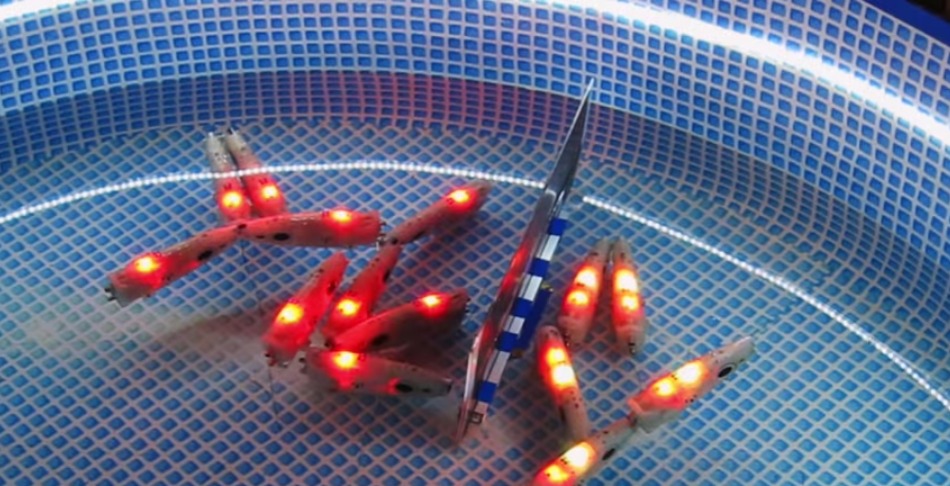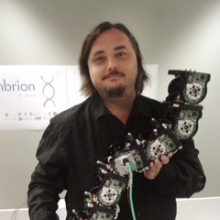
Robohub.org
The Year of CoCoRo Video #06/52: Jeff swarm size measurement

The EU-funded Collective Cognitive Robotics (CoCoRo) project has built a swarm of 41 autonomous underwater vehicles (AUVs) that show collective cognition. Throughout 2015 – The Year of CoCoRo – we will be uploading a new weekly video detailing the latest stage in its development. This video shows the Jeff robot using an algorithm to estimate the size of the swarm.
It is important for our robot swarm that the swarm as a whole is aware of its size. We use a bio-inspired method, called the „fireslime algorithm“ to achieve this form of collective awareness. The algorithm makes the robots to spread a one-bit signal (pulse) among the swarm members allowing them to make quite reliable and precise estimates of the size of their swarm. This video shows an advanced version of the algorithm implemented on Jeff robots.
tags: AUV, c-Research-Innovation, CoCoRo, EU, Swarming, UAV, underwater, video




